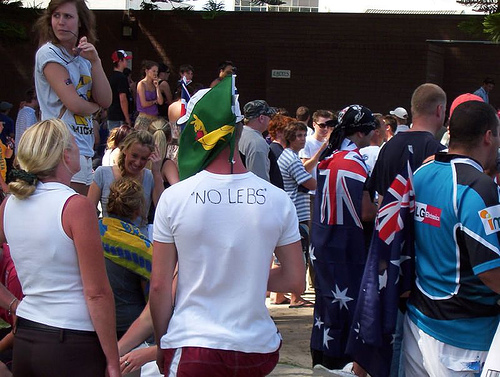
Attitudes towards asylum seekers: Findings from the third Scanlon Foundation Survey
The third Scanlon Foundation Survey, entitled Mapping Social Cohesion, was released last week. Authored by Professor Andrew Markus of Monash University, the report charts the attitudes of Australians around a number of population issues. The survey’s exploration of Australian attitudes towards refugees and asylum seekers makes for interesting reading.
The results highlight the gulf in Australian attitudes towards asylum seekers admitted under our humanitarian program after application offshore compared to those asylum seekers arriving onshore by boat. Two out of three respondents were positive towards asylum seekers who had applied offshore; a level of positivity equivalent to attitudes about immigrants in general. Unfortunately, attitudes towards asylum seekers arriving onshore are nowhere near as positive.
When asked to choose what represented the best policy for dealing with asylum seekers arriving by boat from four possibilities 27% of respondents favoured turning back boats; 13% favoured mandatory detention; 37% favoured temporary residence; with only 19% favouring the right to apply for permanent residence. The respondents most likely to support tougher policies were older, politically conservative and have a lower level of education. This trend is not surprising.
What is surprising is the extent to which this lack of compassion for asylum seekers arriving by boat cuts across demographics. Support for the right of application for permanent residence remains a minority viewpoint even amongst groups traditionally thought to be most sympathetic to the plight of asylum seekers. Only 35% of respondents who indicated that they were likely to vote Greens at the recent federal election supported permanent residence for asylum seekers arriving by boat. Forty-two percent of likely Greens voters supported temporary residence. Alarmingly 20% championed turning back boats or mandatory detention as the most appropriate policy response to boat arrivals.
This high level of negativity to boat arrivals within Australia represents a firmly entrenched view that holds across demographics. In seeking to challenge these beliefs it is necessary to understand what drives them. An increased focus on boat arrivals by both major political parties and the media in past year has undoubtedly played a central role in shaping public opinion. However, this relationship is multi-directional and cyclical; political policy and media coverage both shape public sentiment and reflect it. Professor Markus attributes these negative beliefs to historical factors – a long-held fear of invasion from the north and Australia’s highly stringent immigration controls. In addition to these factors, irregular maritime arrivals challenge Australian ideals of egalitarianism and a ‘fair go’ – reflected in the ongoing vitriol directed towards ‘queue jumpers’ and ‘economic refugees’. The numerous factors shaping these beliefs highlights the difficulty in shifting prevailing attitudes – each of these issues must be addressed in turn.
The generally positive reception for asylum seekers applying offshore suggests that headway can be made on this issue. Introducing a calm and rational voice to this debate is the first step, as discussion has steadily dissolved into an argument driven by emotion and based upon misinformation. A survey conducted by Essential Media Communications in June this year highlighted the extent to which public attitudes are based upon a misperception of reality. Only 18% of those polled could accurately identify the percentage asylum seekers arriving by boat contributed to Australia’s overall immigration intake (1%). 56% percent of individuals overestimated the figure, while 30% of respondents could not indicate a number.
Even though this post has focused on percentages and survey results, I would like to close by affirming my belief that the only way we will make progress on this issue is by moving beyond facts and figures to engage with the human reality of seeking asylum.
Beyond the numbers it is easy to forget that at the centre of this debate are real people with lives, loved ones and hopes and dreams not dissimilar to ours. A Red Cross survey also conducted in June highlighted that sympathy for the plight of asylum seekers is present. Eighty-six percent of respondents agreed that they would flee to a safe country if they lived in a conflict zone, while 94% agreed they would use all of their money to reach a safe country. Australians are not inhumane; rather the horrors responsible for driving asylum seekers to our shores are too far removed from our everyday experiences. Hearing the stories of refugees and understanding what and why they are fleeing will be pivotal in producing attitudinal shift. If we hope to change public perceptions of asylum seekers arriving by boat people must be brought to the forefront of this debate.
For those interested, the full report can be viewed or downloaded at: http://www.globalmovements.monash.edu.au/news/.
Leave a reply

Connect with us
Need help from the ASRC? Call 03 9326 6066 or visit us: Mon-Tue-Thur-Fri 10am -4pm. Closed on Wednesdays.